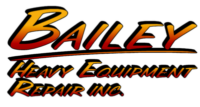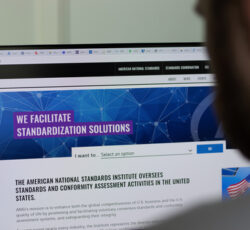What You Need to Know About ANSI Standards and Inspections
In the world of safety, compliance, and operational excellence, ANSI standards and inspections play a critical role in ensuring quality and safety across industries. Whether you’re a business owner, safety officer, or professional responsible for meeting compliance requirements, understanding these standards can significantly impact your operations. This blog delves into what ANSI standards entail, how ANSI inspections are conducted, and actionable insights to help you navigate the complexities of these essential evaluations.
What Are ANSI Standards?
The American National Standards Institute (ANSI) is a private, non-profit organization that oversees the development of voluntary consensus standards for products, services, and systems in the United States. ANSI standards are designed to ensure safety, reliability, and efficiency while fostering innovation and market competitiveness. These standards are not limited to one industry; they span construction, healthcare, manufacturing, and technology, among others.
ANSI does not create the standards itself. Instead, it accredits organizations that develop these standards, ensuring that the development process adheres to principles of transparency, consensus, and balance. For example, ANSI standards may dictate the specifications for equipment, the quality of materials, or procedures for safely operating machinery. Following these standards not only enhances operational safety but also positions businesses to succeed in highly regulated markets.
The Importance of ANSI Inspections
ANSI inspections are evaluations conducted to ensure that a product, service, or system complies with the applicable ANSI standards. These inspections are pivotal for businesses aiming to demonstrate their commitment to safety and quality. Non-compliance can result in legal liabilities, operational disruptions, and reputational damage, making ANSI inspections a vital aspect of business strategy.
Inspectors evaluate various factors during an ANSI inspection. These include the condition of equipment, adherence to operational procedures, and the competency of personnel. For example, in industries such as construction, ANSI inspections ensure that equipment like cranes, scaffolding, and lifts meet safety requirements. Similarly, in manufacturing, inspectors may assess whether processes adhere to ANSI standards to ensure quality control.
Beyond compliance, passing an ANSI inspection can have significant benefits. It fosters trust among stakeholders, enhances employee safety, and reduces the risk of costly accidents or equipment failures. Moreover, it can serve as a competitive differentiator in industries where compliance is a deciding factor for clients and partners.
How to Pass an ANSI Inspection
Successfully passing an ANSI inspection requires preparation, awareness, and consistent adherence to the relevant standards. The first step is identifying which ANSI standards apply to your operations. This may involve consulting industry-specific guidelines or working with accredited standards-developing organizations to determine applicable requirements.
Once you’ve identified the relevant standards, it is essential to implement robust systems to ensure compliance. This includes training employees on procedures and standards, maintaining equipment in line with ANSI specifications, and documenting processes meticulously. For example, operators of heavy machinery should undergo regular training to stay updated on ANSI requirements for safe operation.
Another crucial aspect is conducting internal audits and pre-inspections to identify potential non-compliance issues before the official inspection. These proactive measures help address shortcomings and demonstrate your commitment to meeting ANSI inspection requirements. Moreover, engaging with qualified consultants or third-party experts can provide valuable insights and guidance on achieving compliance.
Effective communication also plays a key role in passing an ANSI inspection. Ensure that your team understands the significance of the inspection and their responsibilities in the process. When the inspector arrives, providing clear, accurate, and well-documented records can streamline the evaluation and create a positive impression. Transparency during the inspection is crucial; hiding issues or providing incomplete information can lead to adverse outcomes.
Common Challenges in ANSI Inspections
While preparing for an ANSI inspection, businesses often encounter challenges that can complicate the process. One common issue is a lack of clarity regarding which ANSI standards apply to specific operations. This confusion can lead to gaps in compliance and increase the likelihood of failing an inspection. Staying informed and consulting with experts can help mitigate this issue.
Another challenge is the complexity of integrating ANSI standards into existing operational frameworks. Many organizations struggle to align their processes and procedures with the stringent requirements of ANSI standards. This may require significant time, effort, and resources to implement necessary changes.
Equipment maintenance is another critical area where businesses falter. Even minor lapses in maintaining machinery or using outdated equipment can result in non-compliance. Routine checks, timely repairs, and upgrades are essential to meet ANSI inspection requirements.
Employee training and engagement can also pose challenges. Employees may resist changes to workflows or fail to understand the importance of compliance. Addressing this issue requires ongoing training and fostering a culture that values safety and adherence to standards.
Lastly, documentation is a frequent stumbling block. Inadequate or disorganized records can make it difficult to demonstrate compliance during an inspection. Investing in proper record-keeping systems and practices is crucial to avoid setbacks.
The Future of ANSI Standards and Inspections
As industries evolve, so too do the ANSI standards and inspection processes. Technological advancements are playing a significant role in shaping the future of these evaluations. For instance, digital tools and software solutions are making it easier for businesses to monitor compliance and maintain records. Automated systems can track equipment performance, schedule maintenance, and alert managers to potential non-compliance issues, streamlining the inspection preparation process.
Sustainability is another area where ANSI standards are likely to see increased focus. As environmental concerns grow, standards may include stricter requirements for energy efficiency, waste management, and sustainable practices. Businesses that prioritize these aspects will not only align with emerging standards but also gain a competitive edge in the market.
Additionally, globalization is influencing ANSI standards and inspections. While ANSI primarily serves the U.S., many of its standards align with international norms, facilitating global trade and collaboration. Businesses that adhere to ANSI standards are often better positioned to meet international requirements, opening up opportunities in foreign markets.
Conclusion
ANSI standards and inspections are foundational to ensuring safety, quality, and compliance across industries. Understanding these standards, preparing thoroughly for inspections, and addressing common challenges are critical for businesses aiming to succeed in today’s competitive landscape. By staying proactive and embracing emerging trends, organizations can not only meet ANSI inspection requirements but also drive long-term growth and innovation.



 When it comes to ensuring safety and compliance in various industries, ANSI inspections play a vital role. ANSI, which stands for the American National Standards Institute, is a well-known organization that develops and maintains safety standards for a wide range of products, systems, and services.
When it comes to ensuring safety and compliance in various industries, ANSI inspections play a vital role. ANSI, which stands for the American National Standards Institute, is a well-known organization that develops and maintains safety standards for a wide range of products, systems, and services.